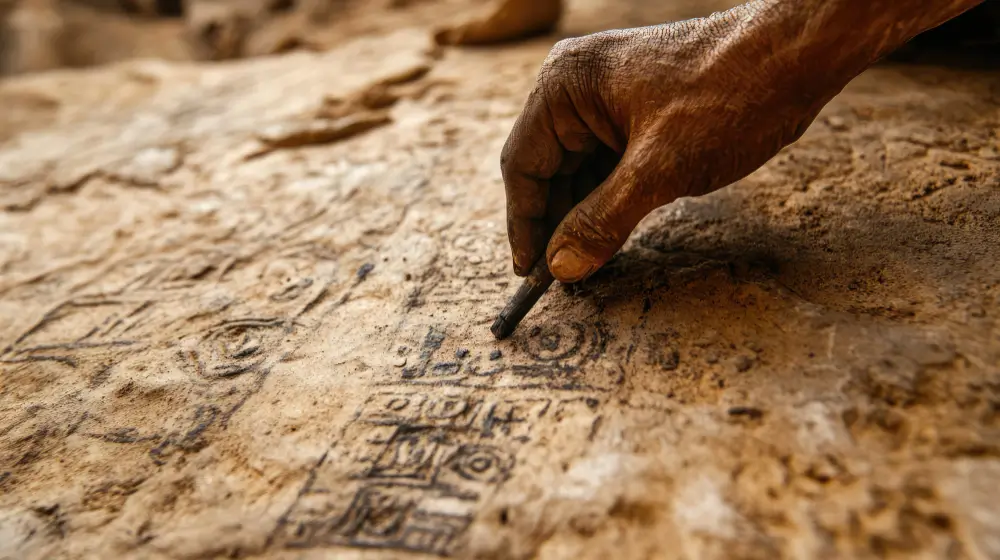The inspiring history of graphic design is as fascinating as the craft itself. From ancient cave paintings to advanced digital tools, graphic design has come a long way. Today, it’s a profession that merges creativity with purpose, shaping the way we communicate visually. But to truly appreciate its significance, we need to explore its rich history, pivotal innovations, and the creative pioneers who changed the way we see the world.
What Is Graphic Design?
At its heart, graphic design is the art of visual communication. It’s not just about creating beautiful images; it’s about conveying messages with meaning and impact. Whether in the form of sleek websites, unforgettable logos, or compelling social media posts, graphic design connects people to ideas in ways that words alone cannot.
To understand this craft better, it’s worth taking a trip back through the history of graphic design to see how it has evolved and grown into the influential field we know today.
1. Ancient Beginnings of Visual Storytelling
Graphic design’s origins lie in humanity’s earliest attempts to communicate visually, long before written language was invented.
- Cave Paintings: Prehistoric humans used cave walls as their first canvas, creating intricate murals depicting daily life, rituals, and beliefs. These visuals, though primitive, were storytelling tools designed to preserve experiences for future generations.
- Symbols and Hieroglyphs: Ancient Egyptians advanced visual communication by using hieroglyphs, a system of symbolic writing that paired visuals with meaning.
These early innovations laid the foundation for visual storytelling, introducing the idea of using images to convey complex ideas.
Learn more about the origins of visual communication
2. Gutenberg’s Printing Press Revolution
One of the most critical milestones in the history of graphic design was the invention of the printing press by Johannes Gutenberg in the 15th century.
The printing press transformed how information was shared by making books more accessible to the masses. Typography was born as the craft of arranging text became an art form in itself.
Early printed works blended function with beauty, with ornate typefaces and layouts setting the standard for visual communication. This era symbolizes the marriage of technology and artistry in graphic design.
3. The Rise of Mass Production and Advertising
The 18th and 19th centuries brought significant advancements in production, paving the way for commercial graphic design.
- Lithography: Invented during this time, lithography allowed artists to produce detailed posters and colorful advertisements. These works showcased bold illustrations and typography designed to captivate audiences.
- Arts and Crafts Movement: Designers like William Morris emphasized the importance of handcrafted quality, seeking to balance functionality with aesthetic beauty in their work.
This era turned graphic design into a practical tool for marketing and communication, influencing industries like advertising, publishing, and product packaging.
4. The Bauhaus Movement and Modernism
The early 20th century was marked by modernist movements that redefined graphic design as we know it.
- Bauhaus: This influential school combined function with minimalism, emphasizing clean lines, geometric shapes, and purposeful design. Designers like Herbert Bayer created unified layouts and typefaces that remain iconic.
- Modernism: Minimalism and clarity became central principles, with grid-based layouts and sans-serif fonts gaining prominence.
These approaches are still widely used today, especially in branding and web design.
Explore how Bauhaus shaped design principles in the modern era here.
5. Mid-Century Branding Explosion
By the mid-1900s, corporations began to recognize the power of visual branding. Logos became essential for defining a company’s identity and values, with many iconic symbols created during this time.
Think of timeless logos like the Coca-Cola script or IBM’s bold simplicity. These designs elevated corporate graphic design into a strategic art form.
6. The Digital Revolution
The late 20th century introduced the tools that would revolutionize the field forever.
- Desktop Publishing: Programs like Adobe Illustrator and Photoshop gave graphic designers unprecedented creative freedom.
- Web Design: With the internet’s rise, graphic design expanded into digital spaces, paving the way for UX/UI design.
- Social Media and Motion Graphics: Platforms like Instagram and TikTok demand visually compelling content, pushing the boundaries of what graphic design can do.
Discover how digital tools transformed graphic design.
7. Graphic Design in the Modern Age
Graphic design today is more diverse and impactful than ever. From branding and advertising to immersive AR/VR designs, the field continues to grow and adapt. Designers solve problems, tell stories, and shape the experiences we encounter every day.
Want to deepen your design knowledge? Check out our guide to The Essential Graphic Design Tools for Beginners
Why Understanding the History of Graphic Design Matters
The inspiring history of graphic design is more than just a timeline—it’s a celebration of innovation and creativity. By studying the evolution of visual communication, we gain a deeper appreciation for where the field is headed.
Our ancient ancestors painted on cave walls, and now we craft immersive experiences for virtual worlds. The tools and mediums may change, but the heart of graphic design—connecting ideas to people—is timeless.
Final Thoughts
The history of graphic design isn’t just a tale of artistry; it’s a window into our collective desire to communicate and connect. From the first symbols etched on cave walls to the striking graphics we see on digital screens, this field has shaped human culture in countless ways.
Whether you’re a budding designer, a curious historian, or simply someone who loves creativity, the story of graphic design offers endless inspiration.






0 Comments